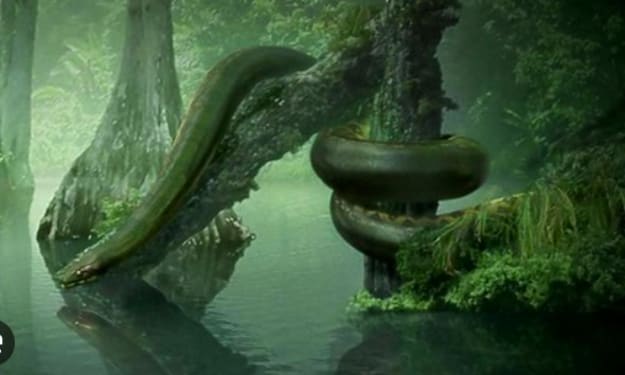The Marvel of Earth: The Extraordinary Blue Planet
Unveiling the Secrets of Our Unique Home in the Universe
Earth, the beautiful blue planet we call home, stands out in the vastness of space as the only known place that sustains life. It is a marvel of scientific phenomena and sheer chance. This small speck in the universe holds the keys to our past, present, and future.
Around 4.5 billion years ago, Earth began to take shape from particles left over after the formation of our sun. Gravity pulled these particles together, creating pebbles, then boulders, and eventually the planet. At the core of Earth lies a solid inner layer encased by a liquid outer core. Above this is the mantle, made up of flowing silicate rocks, and atop that is the rocky crust.
Earth is the third planet from the sun, orbiting at an average distance of about 93 million miles. This position is ideal: close enough to the sun to stay warm, unlike the cold, distant gas giants, but not so close that it is scorched by extreme heat and solar radiation like Mercury. This unique placement allows Earth to host phenomena found nowhere else, particularly liquid surface water and life.
One theory suggests that much of Earth’s water is as ancient as its rocks, both forming during the planet’s early days. Due to its perfect distance from the sun, Earth can maintain water in all its forms—liquid, ice, and gas. Unlike other planets, where water is either permanently frozen or evaporated into space, Earth’s water cycle is dynamic and essential for life.
The presence of liquid water on Earth has profound implications. It hydrates the land, creating nutrient-rich soil, pools into oceans and freshwater systems, and evaporates into the atmosphere, adding moisture. Where there is liquid water, there is life. About 3.8 billion years ago, primitive life forms such as microbial organisms appeared in Earth’s oceans. Over billions of years, these simple organisms evolved into a vast array of plants, animals, and other life forms that now inhabit our seas, lands, and skies.
Earth’s biodiversity is nothing short of astonishing. Scientists have cataloged around 1.5 million species of plants, animals, bacteria, fungi, and more, with potentially millions, if not billions, yet to be discovered. This incredible variety of life thrives in a global ecosystem fueled by water, showcasing the unique and grand nature of our planet.
Not just a home, Earth is a vibrant, living entity shaped by cosmic events and natural processes. Its ability to support life makes it a rare jewel in the universe, deserving of our admiration and protection.
The Formation of Earth
Approximately 4.5 billion years ago, the particles left from the sun’s creation began to coalesce under the force of gravity, gradually forming pebbles, then larger boulders, and finally, the planet Earth. This process, known as accretion, laid the foundation for our world. The core of Earth consists of a solid inner core surrounded by a liquid outer core. Above these cores lies the mantle, a layer of silicate rocks that flows slowly over geological timescales. The outermost layer, the crust, is a solid shell of rock that forms the continents and ocean floors.
Earth’s Optimal Position
Earth’s position in the solar system is critical to its ability to support life. Situated about 93 million miles from the sun, it is within the habitable zone, sometimes called the “Goldilocks zone,” where temperatures are just right for liquid water to exist. This distance ensures that Earth is neither too hot like Mercury nor too cold like the distant gas giants. This unique spot in the solar system allows Earth to maintain the liquid surface water that is essential for life.
Water: The Lifeblood of Earth
Water is fundamental to life on Earth. One theory posits that Earth’s water is as old as its rocks, both forming during the early days of the planet. Due to its optimal distance from the sun, Earth can sustain water in all three states: liquid, ice, and gas. This dynamic water cycle is crucial for the planet’s climate and the survival of its ecosystems. Water hydrates the land, creating fertile soil; it collects in vast oceans and freshwater systems; and it evaporates into the atmosphere, contributing to weather patterns.
The Origins of Life
Around 3.8 billion years ago, the first primitive life forms emerged in Earth’s oceans. These microbial organisms were the ancestors of all life on Earth. Over billions of years, they evolved into a diverse array of plants, animals, and other organisms. Today, Earth’s biodiversity is astonishing, with around 1.5 million species cataloged and potentially millions more yet to be discovered. This rich tapestry of life forms a global ecosystem that is both intricate and resilient.
Biodiversity and Ecosystems
Earth’s biodiversity is a testament to its capacity to support life. From the depths of the oceans to the heights of mountain ranges, life thrives in every corner of our planet. This diversity is sustained by the planet’s dynamic ecosystems, which are fueled by water and other essential resources. Scientists continue to discover new species, underscoring the incredible variety and adaptability of life on Earth.
Conclusion
Earth is not merely a planet; it is a vibrant, living entity shaped by billions of years of cosmic events and natural processes. Its ability to sustain life makes it a rare and precious jewel in the universe. As we continue to explore and understand our planet, we must also commit to protecting and preserving it for future generations. Earth is a testament to the beauty and complexity of life, deserving our utmost care and respect.
About the Creator
Enjoyed the story? Support the Creator.
Subscribe for free to receive all their stories in your feed. You could also pledge your support or give them a one-off tip, letting them know you appreciate their work.






Comments
There are no comments for this story
Be the first to respond and start the conversation.